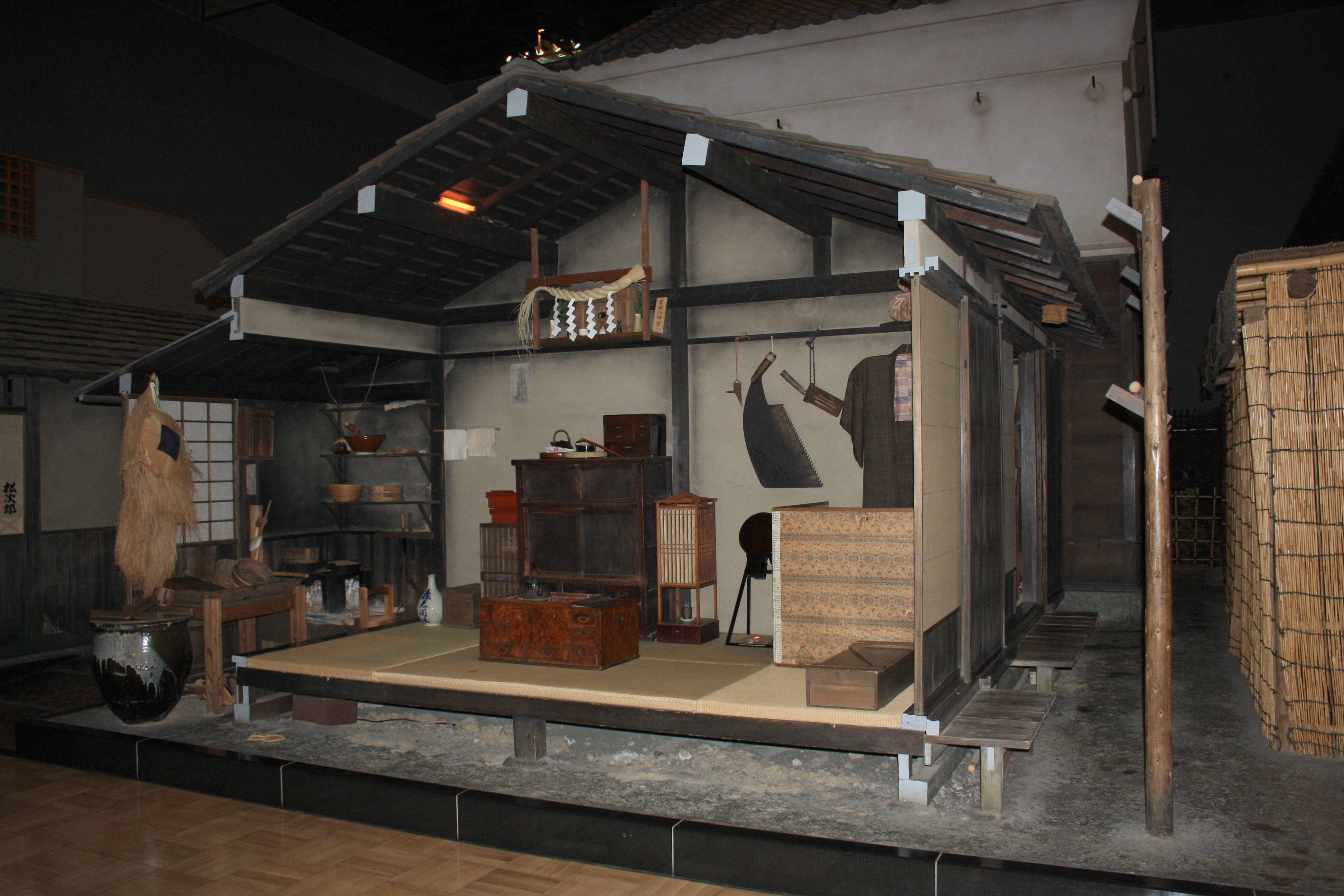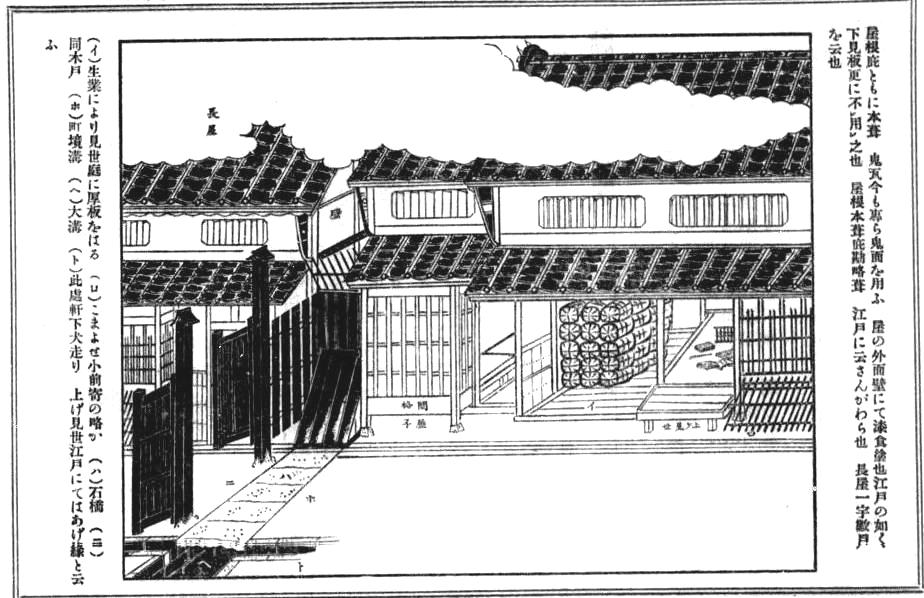Nagaya (architecture) on:
[Wikipedia]
[Google]
[Amazon]

 is a type of Japanese rowhouse that was typical during the
is a type of Japanese rowhouse that was typical during the

 is a type of Japanese rowhouse that was typical during the
is a type of Japanese rowhouse that was typical during the Edo period
The , also known as the , is the period between 1600 or 1603 and 1868 in the history of Japan, when the country was under the rule of the Tokugawa shogunate and some 300 regional ''daimyo'', or feudal lords. Emerging from the chaos of the Sengok ...
(1603–1868).
A was a long housing complex under the same ridge, one or two stories high, divided into small compartments for rent. The well, toilet and waste facilities were shared. Except for a bedroom, each household only had a kitchen. Historically, similar houses were built around a rich manor or castle for low-ranking samurai
The samurai () were members of the warrior class in Japan. They were originally provincial warriors who came from wealthy landowning families who could afford to train their men to be mounted archers. In the 8th century AD, the imperial court d ...
. Later, they accommodated both samurai and commoners. At the ends of the building shops were located, typically, their owners living in adjacent rooms.
The wealthier tenants lived in the rooms facing the street. Usually, the tenants of a didn't have a family. The rooms had an earthen floor, with a size of 8–10 square meters.
were also known as , due to their tendency to catch fire.
If a gateway was located in one section, that structure was called a .
See also
*Minka
are Vernacular architecture, vernacular houses constructed in any one of several traditional Japanese architecture, Japanese building styles.
In the context of the four divisions of society, were the dwellings of farmers, artisans, and merchan ...
(vernacular houses)
* Machiya (a larger townhouse)
References